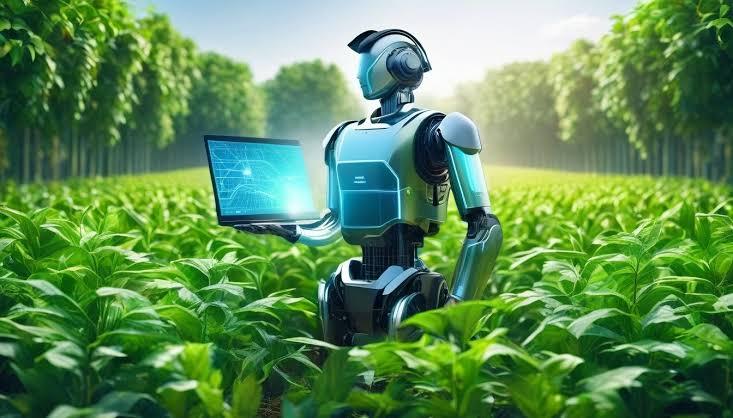Inquire
AI-DRIVEN SMART FARMING ROBOT

An AI-driven smart farming robot is an advanced agricultural system that integrates artificial intelligence (AI), robotics, and Internet of Things (IoT) technologies to perform automated farming tasks with precision and efficiency. These robots are designed to assist or replace human labor in activities such as seeding, weeding, irrigation, harvesting, crop monitoring, and pest control—ultimately increasing crop yield, reducing resource waste, and promoting sustainable farming.
Components and Architecture:
1. Robotic Platform (Hardware Layer):
The robot is built on a mobile platform with wheels or robotic legs that allow navigation across various terrains.
Equipped with manipulator arms, tool attachments, or seed dispensers for performing physical tasks like planting, spraying, or harvesting.
2. Sensors & Data Acquisition Systems:
A variety of sensors collect environmental and crop data:
Camera/Computer Vision System – Captures high-resolution images for plant health monitoring.
Soil Moisture Sensor – Measures soil water content for irrigation decisions.
Temperature and Humidity Sensors – Tracks ambient conditions affecting crop growth.
Ultrasonic or LiDAR Sensors – Used for obstacle detection and navigation.
3. AI & Machine Learning Module (Intelligence Layer):
The robot uses AI algorithms trained on image datasets to identify:
Healthy vs. diseased plants
Weed species vs. crops
Ripeness levels for harvesting
Machine Learning models continuously improve decisions based on real-time feedback.
Convolutional Neural Networks (CNNs) are often used for object detection and classification in plant monitoring.
4. Autonomous Navigation System:
Combines GPS, IMU (Inertial Measurement Unit), and SLAM (Simultaneous Localization and Mapping) to navigate fields without human intervention.
Uses path planning algorithms to avoid obstacles and optimize coverage.
5. Actuation & Control System:
Motor controllers and servo systems enable precise control of movement, tool operation, and plant interaction.
Integration with edge computing allows local processing for fast decision-making.
6. Communication and Cloud Integration:
IoT modules (Wi-Fi, 4G/5G, LoRa) send collected data to cloud platforms for storage and further analysis.
Enables remote monitoring, system updates, and farm analytics via dashboards or mobile apps.
Functional Capabilities:
Precision Seeding: Accurate seed placement using GPS and AI to determine optimal planting locations.
Targeted Weeding: Detects weeds using computer vision and removes them with mechanical arms or spot spraying.
Automated Irrigation: Activates irrigation systems based on real-time soil moisture data.
Disease Detection: Scans leaves for early signs of disease or pests and alerts the farmer.
Yield Estimation: Uses AI models to count fruits or assess crop volume for forecasting.
Benefits:
✅ Reduces manual labor and operational costs.
✅ Enhances productivity with data-driven decisions.
✅ Minimizes pesticide and water usage through targeted actions.
✅ Operates 24/7 under various weather conditions.
✅ Collects valuable agricultural data for predictive modeling.
Conclusion:
An AI-driven smart farming robot is a transformative solution for modern agriculture, offering automation, precision, and intelligence in farming operations. By combining robotics, AI, and IoT, it enhances crop health, improves efficiency, and supports sustainable practices—making it a key enabler in the future of precision agriculture and smart farming ecosystems.
- Managerial Effectiveness!
- Future and Predictions
- Motivatinal / Inspiring
- Other
- Entrepreneurship
- Mentoring & Guidance
- Marketing
- Networking
- HR & Recruiting
- Literature
- Shopping
- Career Management & Advancement


 SkillClick
SkillClick